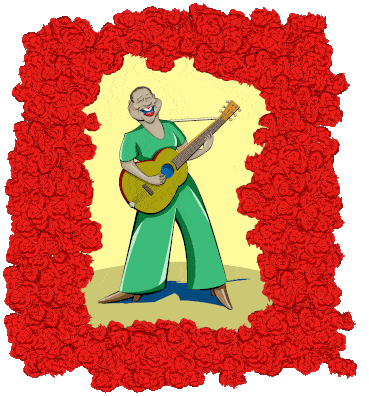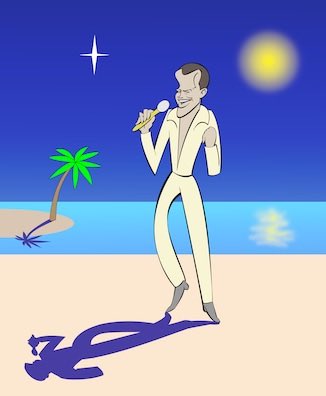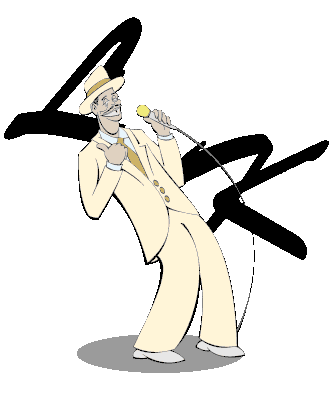Calypso Rose

(Click on the image to zoom in and out.)
Although many Americans associate calypso with the island of Jamaica as represented by the songs of Harry Belafonte, the genre's origins were really from Trinidad and Tabago. In Trinidadian calypso - performed by luminaries like Lord Kitchener, Myler the Dentist, One Man Bisco, and The Senior Inventor - the music backing is not simply a guitar with some steel drums and maracas. Instead wind instruments - saxophone, trumpet, and trombone - are prominent and often form sections of quite sizable orchestras.
Calypso's roots go back well into the 19th century from the songs of the enslaved West Indian populations. But the music that is recognizably calypso emerged around 1898 in the Caribbean carnivals. Unlike the singing of Harry - which is often quiet and smooth - Caribbean calypso can be quite vigorous.

Harry Belafonte

Lord Kitchener
Because the lyrics of the calypso songs are subject to, well, to various interpretations, it was the menfolk who were the traditional singers. Even mild double entendres weren't considered quite proper for the ladies to enunciate. Well into the 20th Century there were few female singers of the music.
Of course, few does not mean none. One of the earliest of the women calypsonians is known only as Bodicea who by the accounts had a rather vivacious and at times pugnacious personality. Moving forward a number of years there was Lady Thelma (who originally hailed from Trinidad) and was singing in New York City around the time of the Second World War. As far as is known, she made no recordings.
Better documented was Edna Pierre who as Lady Iere released a few 10" 78 rpm singles in the 1950's. Lady Iere would appear by herself and sometimes with her husband, Lord Iere. As should be evident, calypso singers did (and do) assume colorful stage names.
But the first woman calypso singer to gain true international renown was Linda McCartha Monica Sandy-Lewis who was born in Tabago in 1940. Taking the name Calypso Rose she began appearing in the 1960's and entered the competitions - a longtime tradition in calypso - where she began besting the best of the best and who were inevitably men. Naturally after winning a contest she couldn't be called the "King" and so was quickly dubbed the "Queen of Calypso". Rose issued her first recording in 1968.
Naturally there was some resentment amongst the menfolk that a lady could sing as well or better than they could. Rose told how one male singer would deliberately remain on stage past his allotted time to just keep her from performing. Of course, Rose had the latter laugh when in 2017 her album, Far From Home, went platinum1 while her discourteous competitor faded from sight and sound.
Yes, Rose's songs do have the famous calypsodian double entendres. In a song about how a Mr. Russell offered her a ride to work on his bicycle, her lyrics imply some characteristics about the gentlemen:
I jump on the bicycle and are gone
But before he pedal I have to jump off
Because his tire run soft.
Rose settled in Queens, New York, but has donated her many awards - including the Victoire de la Musique Award (which is the French version of a Grammy Award) to the Icons of Tobago Museum at Fort King George. Like the true chantwells Rose writes her own music. She began writing in her teens and has (by current count) penned over 800 tunes. As the verb tense indicates, Rose is still singing and recording.
References and Further Reading
Trinidad Calypso: A Study of the Calypso as Oral Literature, Keith Warner, Heinemann Education, 1983.
78-Year-Old Caribbean Trailblazer Calypso Rose on Her History-Making Coachella Gig", Billboard, April 10, 2019.
"Lady Iere, Edna Pierre", Discogs.